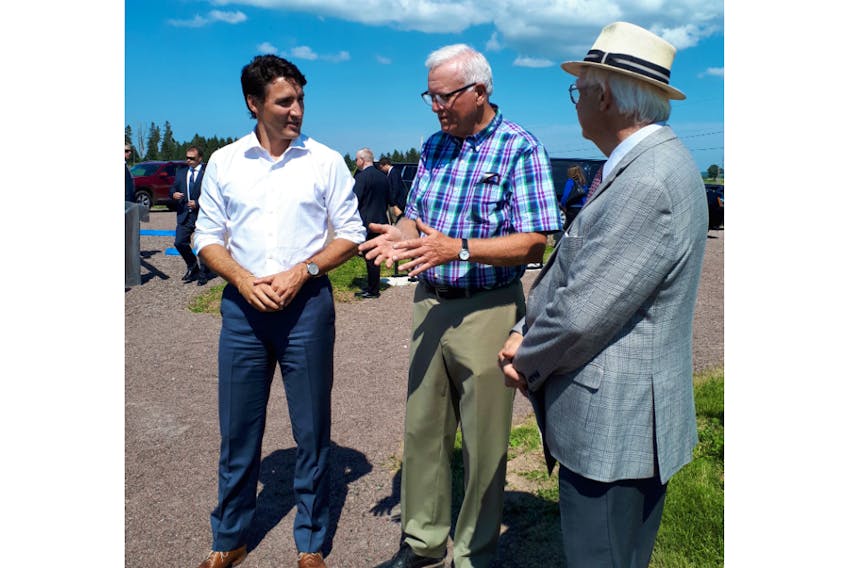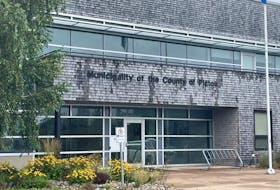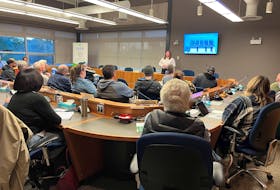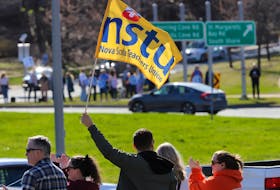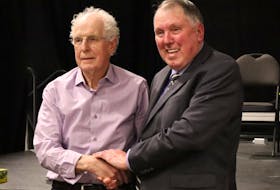AMHERST, N.S. – One of Canada’s newest historical sites had a special visitor July 16.
Prime Minister Justin Trudeau made a brief stop at the Beaubassin National Historic Site to tour the former Acadian village and learn a little about his family connection to the community that was destroyed by fire in 1750.
“It put a bit of a spotlight on Beaubassin and it also should help Parks Canada officials when the decide to expand and further develop the village when the time comes,” Cumberland-Colchester Liberal MP Bill Casey said. “It helps that the prime minister knows about Beaubassin and understands its significance.”
The prime minister is in Nova Scotia to meet Premier Stephen McNeil and to announce infrastructure funding for a section of Highway 104 near Antigonish.
- Trudeau announces funding to twin highway from Sutherland's River to Antigonish
- Trudeau leaving Northern Pulp’s pipe plans to provincial jurisdiction
While visiting Beaubassin, the prime minister met with genealogist Stephen White
from the University of Moncton’s Centre for Acadian Studies. White presented the prime minister a copy of the baptismal certificate he acquired from the French government showing that an ancestor of Trudeau – Simon Savoie – was baptized at the church at Beaubassin on May 22, 1740
Beaubassin was a thriving Acadian village on the Chignecto Isthmus. The village was burned by French troops in 1750 to prevent English take-over during the ongoing conflict. The British then built Fort Lawrence to defend the border, used until the take-over of Fort Beausejour.
In his research, White chronicled how Savoie, at age 16, left Beaubassin with his mother and his three brothers and sisters in 1755 to escape the Acadian expulsion, arriving at Fort Gaspereaux near present day Port Elgin, N.B. From there, they made their way by boat to Isle St. Jean (Prince Edward Island) and eventually to Quebec.
His father, Francois Savoie, complied with the British request to go to Fort Beausejour following its capture to hear the king of England’s orders regarding their lands. This was a ruse as the British took him and the other heads of the Acadian households prisoner and he was dispatched on the Prince Frederick for Georgia, leaving his wife and children behind at Chipoudy from where they made their escape to Fort Gaspereaux.
The father attempted to escape back to Acadia, but was captured in New York and the last record of him was in August 1756. The family never saw him again.
After several years of lobbying the village was the site of an archeological dig several years ago by Parks Canada, while last year saw the construction of a view park on the site that includes a wooden pavilion that displays interpretive panels detailing the history of the village.
“Beaubassin is an important, if not sometimes overlooked, piece of our history,” Casey said. “The history there is enormous in that it’s the place where the English and the French and the Acadians and Indigenous people all intersected. I think the prime minister got a good perspective on that.”
Trudeau is the second prime minister to visit the site. During the 2015 federal election campaign, former PM Jean Chretien visited Beaubassin during a campaign stop in Amherst with Casey. It was Chretien who helped Casey get the ball rolling on recognizing and developing Beaubassin as a national historic site.
Casey said work on Beaubassin is continuing. The view park was completed last year and Parks Canada is now developing a touring exhibit that will take some of the artifacts gathered at Beaubassin to various locations around the region.
“Beaubassin is not well known even though it’s one of the most intact Acadian villages from that era. They have found 53 foundations and more than 7,000 artifacts, and there’s still more to do,” he said. “It’s great to have this attention focused on Beaubassin.”
Twitter: @ADNdarrell

